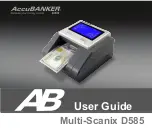
Chemical safety
WARNING!
GENERAL CHEMICAL HANDLING.
To minimize hazards, ensure laboratory personnel
read and practice the general safety guidelines for chemical usage, storage, and waste provided
below. Consult the relevant SDS for specific precautions and instructions:
·
Read and understand the Safety Data Sheets (SDSs) provided by the chemical manufacturer
before you store, handle, or work with any chemicals or hazardous materials. To obtain SDSs, see
the "Documentation and Support" section in this document.
·
Minimize contact with chemicals. Wear appropriate personal protective equipment when handling
chemicals (for example, safety glasses, gloves, or protective clothing).
·
Minimize the inhalation of chemicals. Do not leave chemical containers open. Use only with
sufficient ventilation (for example, fume hood).
·
Check regularly for chemical leaks or spills. If a leak or spill occurs, follow the manufacturer
cleanup procedures as recommended in the SDS.
·
Handle chemical wastes in a fume hood.
·
Ensure use of primary and secondary waste containers. (A primary waste container holds the
immediate waste. A secondary container contains spills or leaks from the primary container.
Both containers must be compatible with the waste material and meet federal, state, and local
requirements for container storage.)
·
After emptying a waste container, seal it with the cap provided.
·
Characterize (by analysis if needed) the waste generated by the particular applications, reagents,
and substrates used in your laboratory.
·
Ensure that the waste is stored, transferred, transported, and disposed of according to all local,
state/provincial, and/or national regulations.
·
IMPORTANT!
Radioactive or biohazardous materials may require special handling, and disposal
limitations may apply.
WARNING!
HAZARDOUS WASTE (from instruments).
Waste produced by the instrument is
potentially hazardous. Follow the guidelines noted in the preceding General Chemical Handling
warning.
WARNING!
4L Reagent and Waste Bottle Safety.
Four-liter reagent and waste bottles can crack
and leak. Each 4-liter bottle should be secured in a low-density polyethylene safety container with the
cover fastened and the handles locked in the upright position.
Appendix E
Safety
Chemical safety
E
52
Countess
™
3 Automated Cell Counter User Guide
Содержание Invitrogen AMQAX2000
Страница 55: ......





































